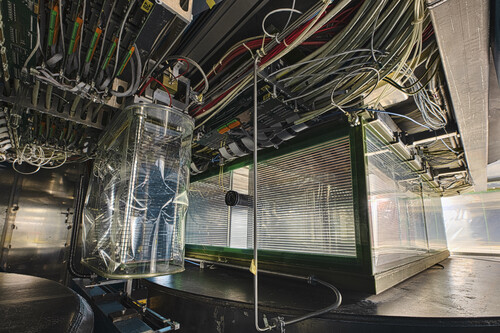Quarks are elementary particles that make up the protons and neutrons in the atomic nucleus. They’re classified as fermions. Quarks come in different varieties, which physicists refer to as “flavors”: up, down, charm, strange, top, and bottom. The most common flavors found in ordinary matter are the top and bottom quarks. Interestingly, the top quark is notable for being the heaviest elementary particle discovered in nature.
Meanwhile, supersymmetry is a theoretical model in particle physics. This model proposes that each fundamental particle has a corresponding hypothetical particle associated with it. Supersymmetry attempts to explain the relationship between bosons, which have an integer spin, and fermions, which have a half-integer spin. However, it’s important to note that supersymmetry is still a theoretical framework and hasn’t been observed experimentally.
Physicists Haven’t Fully Grasped How Quarks and Gluons Combine
The strong nuclear force is one of the four fundamental forces of nature. It serves as the “glue” that binds quarks together, forming protons, neutrons, and other hadrons. This strong interaction also ensures the cohesion and stability of atomic nuclei. Until recently, particle physicists believed that this force interacts equally with all quarks, regardless of their flavor. This principle, known as isospin symmetry, accounts for the differences in masses and electric charges among quarks.
Heavy ions are atoms or molecules that have gained or lost electrons, resulting in a net positive or negative electric charge. According to isospin symmetry, collisions involving heavy ions should produce similar quantities of electrically charged kaons and neutral kaons because the masses of the up and down quarks are similar.
A kaon is a subatomic particle composed of a quark and an antiquark–a strange quark, to be precise. This unique composition gives kaons some unusual properties, making their study valuable for a better understanding of matter’s characteristics.
However, CERN physicists conducting the NA61/SHINE experiment have just discovered that isospin symmetry doesn’t hold true. They found a significant imbalance in the production of charged and neutral kaons during heavy ion collisions. Although physicists had suspected that some level of imbalance could occur, the magnitude of this difference was unexpected. Notably, current theoretical models struggle to explain why.
While this may seem like a problem, it’s also an opportunity for the scientific community. In particle physics, these discrepancies allow researchers to explore new theories and better understand their experiments. The discrepancy in isospin symmetry could help physicists to fully comprehend the strong nuclear force and shed light on how quarks and gluons combine to produce hadrons.
Image | CERN




Log in to leave a comment